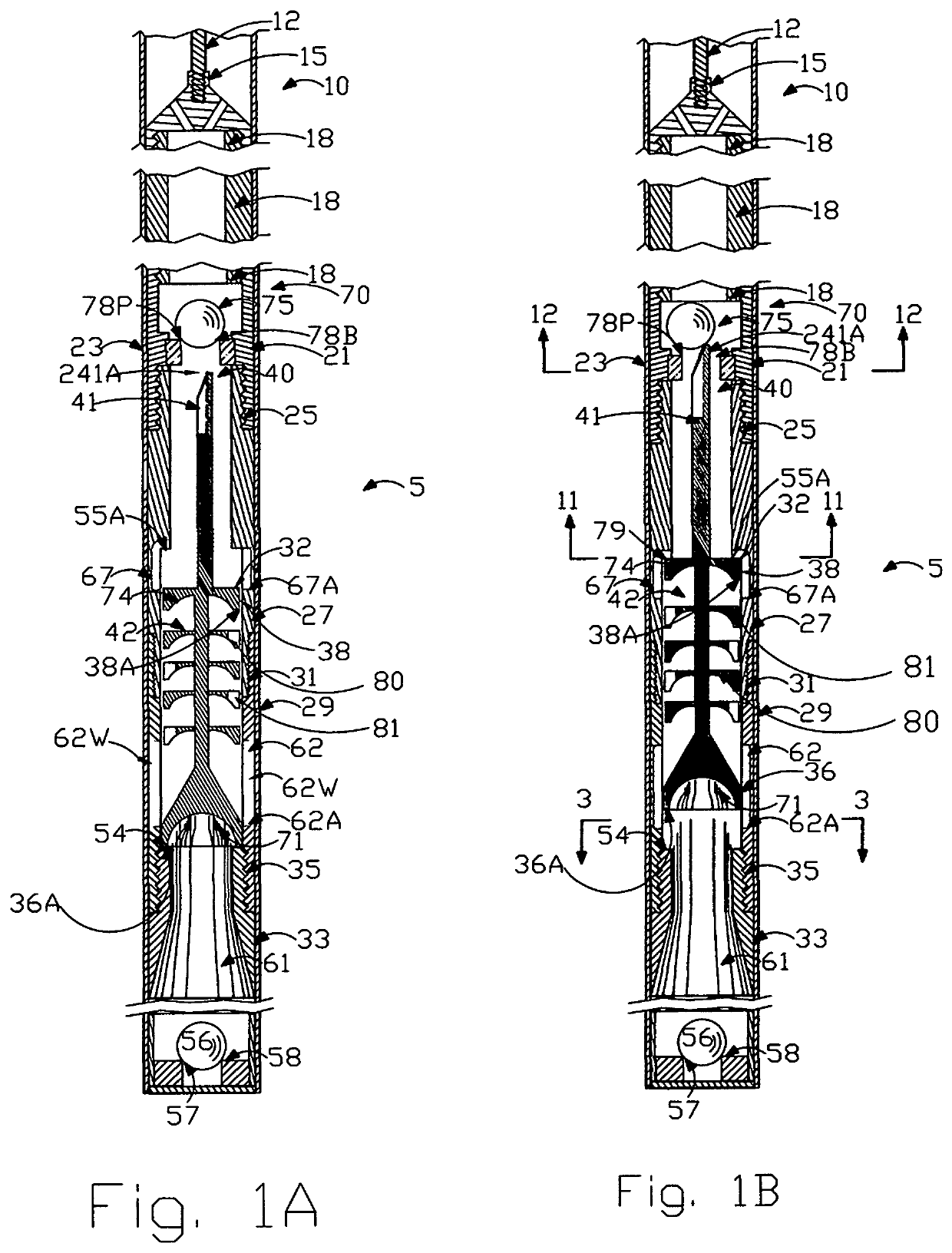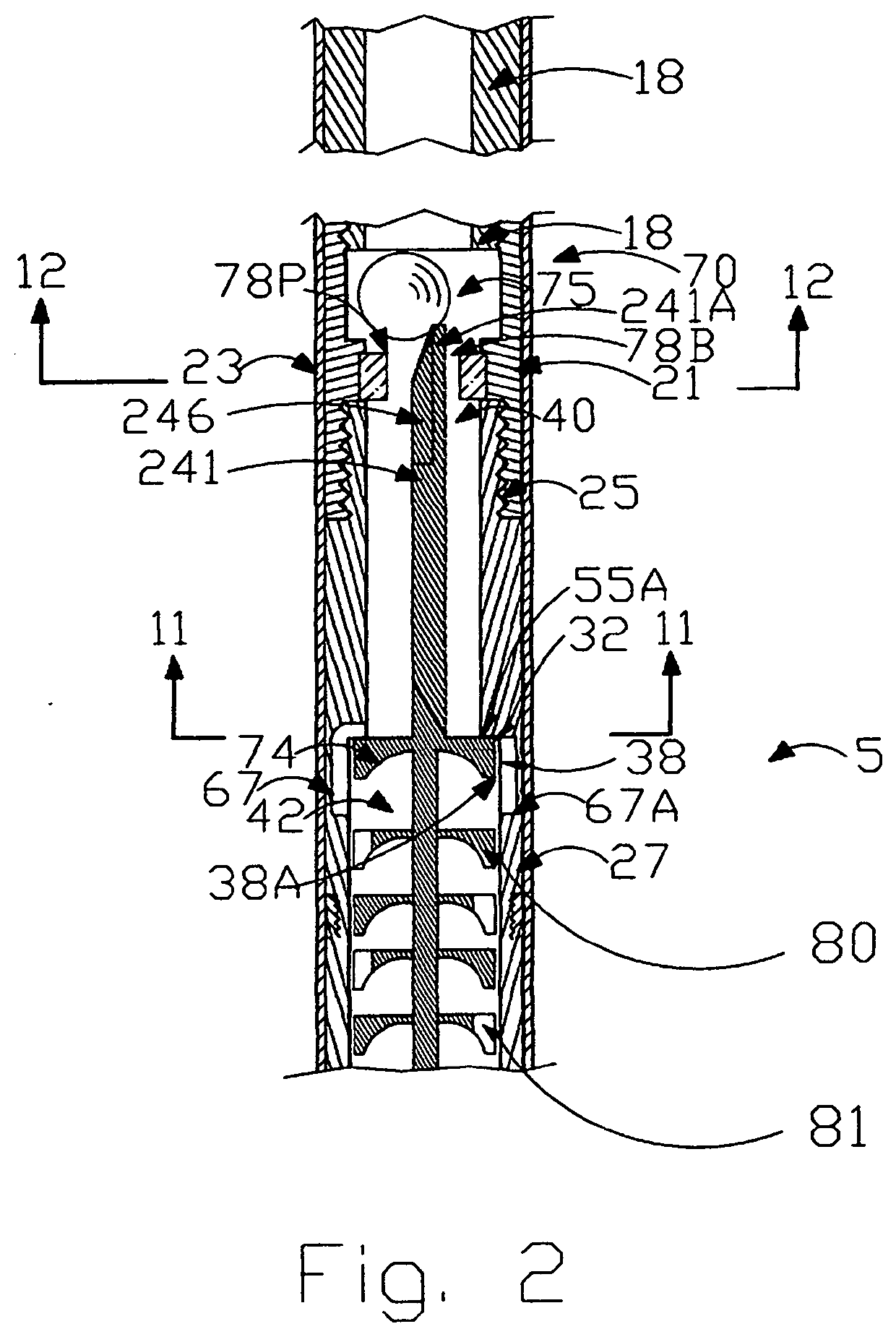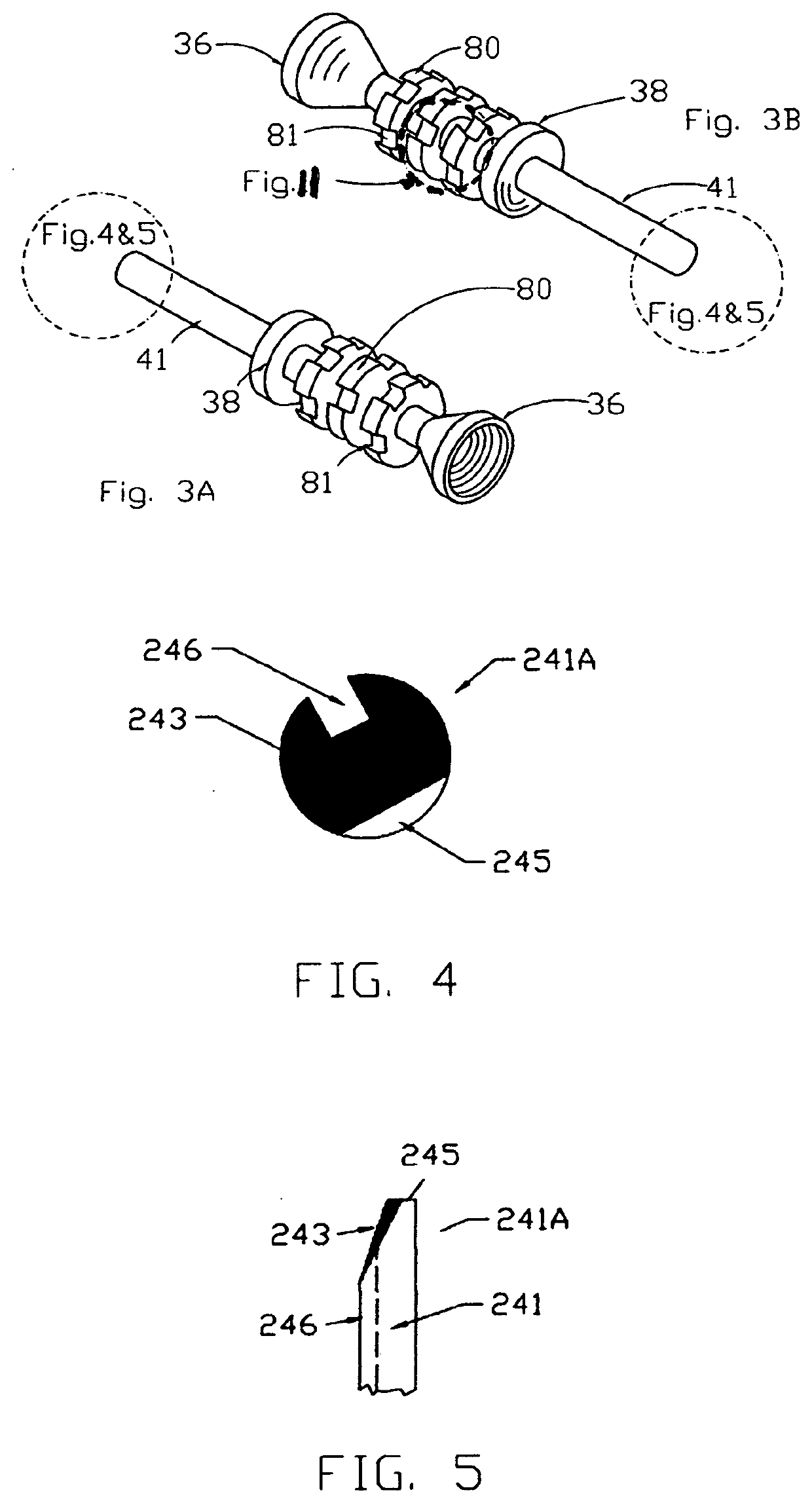Ball and seat valve assembly and downhole pump utilizing the valve assembly
- Summary
- Abstract
- Description
- Claims
- Application Information
AI Technical Summary
Benefits of technology
Problems solved by technology
Method used
Image
Examples
Embodiment Construction
[0041]Referring now to the figures the present invention will be shown and described in detail. Fluid is defined as gas, water, oil or mixture thereof.
[0042]FIGS. 1A and 1B are cross-sectional views of reciprocating fluid pump 10 of the present invention showing piston 40 in a lower and in an upper position, respectively.
[0043]In general, sucker rod 322 connects to and actuates pump pull rod 12. Sucker rod 322 is actuated from the surface by any of the well known means, usually a “rocking horse” type pump jack unit . . . .
[0044]Threaded connection 25 joins traveling valve cage 21 with tubular housing 27, which extends downwardly to lower housing 29 by threaded connector 31. Housing 29 in turn extends downwardly and connects to housing 33 through threaded connector 35. It is to be understood that housings 27, 29 and 33 form hollow tubular housing assembly 5 which is adapted for attachment to the traveling valve 70.
[0045]At the bottom of barrel 23 is positioned conventional standing v...
PUM
 Login to View More
Login to View More Abstract
Description
Claims
Application Information
 Login to View More
Login to View More - R&D
- Intellectual Property
- Life Sciences
- Materials
- Tech Scout
- Unparalleled Data Quality
- Higher Quality Content
- 60% Fewer Hallucinations
Browse by: Latest US Patents, China's latest patents, Technical Efficacy Thesaurus, Application Domain, Technology Topic, Popular Technical Reports.
© 2025 PatSnap. All rights reserved.Legal|Privacy policy|Modern Slavery Act Transparency Statement|Sitemap|About US| Contact US: help@patsnap.com



